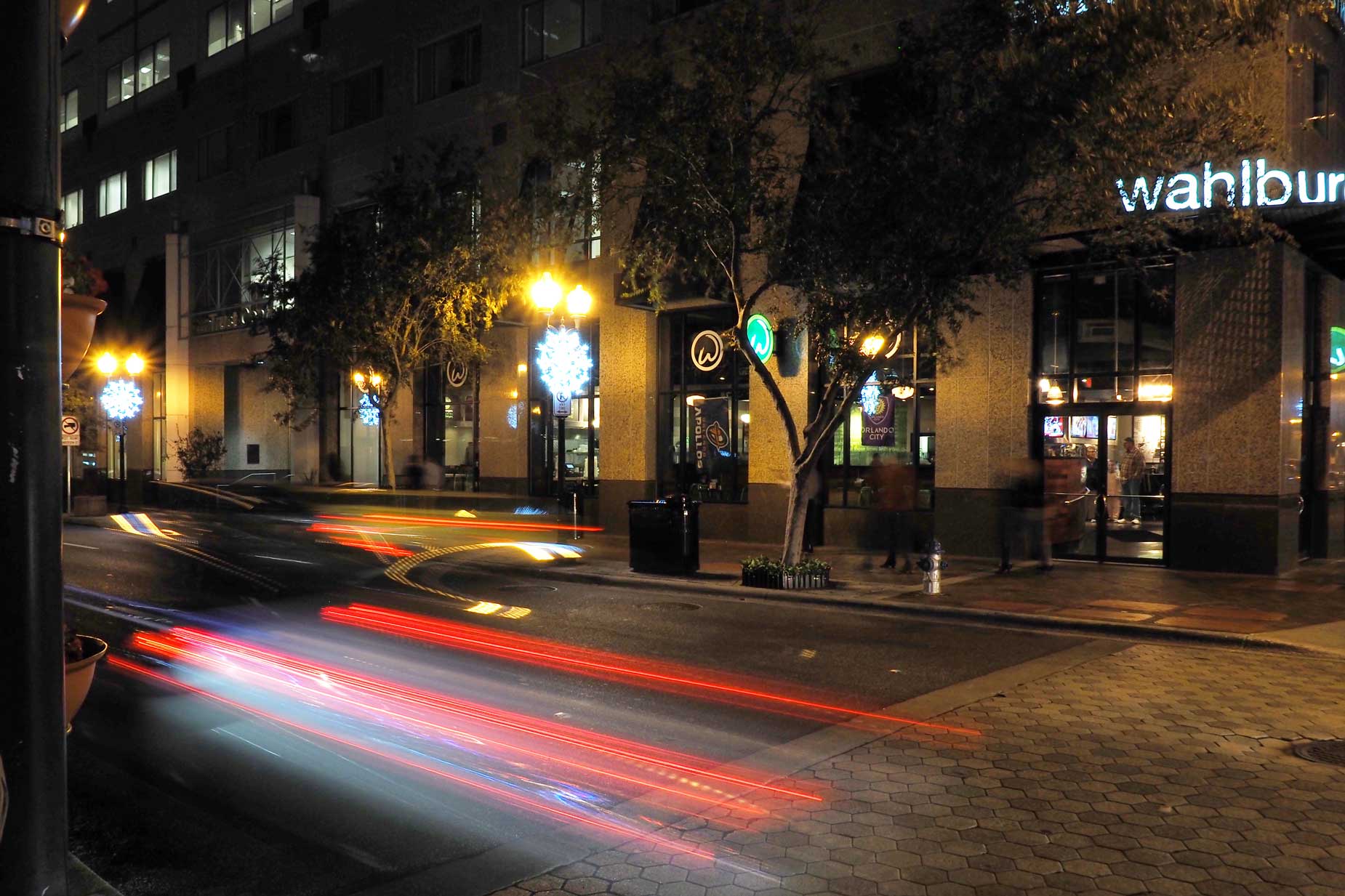Today’s Post by Joe Farace
In theory there is no difference between theory and practice. In practice there is. —Yogi Berra
Whenever I teach a workshop, the first question I hear from students and one that usually permeates the entire event is their quest to obtain perfect exposures. Back in the 1970’s I used to tell my Basic Photography students at Howard Community College in Columbia, Maryland that the perfect exposure was the one they liked. And I still believe that today.

How I made this shot: Long exposures are always fun to shoot but I’ve never tried getting a sharp image with this technique while hand holding a camera before this night. I shot this image of a street scene in downtown Orlando using an Olympus E-M1X that has world class IBIS. This lens was Oly’s 12-100mm f/4 IS Pro lens (at 21mm) with a hand held exposure of four seconds at f/11 and ISO 200. Much like my quest to buy an Olympus Pen F, I’ve always wanted to own one of these cameras and have been watching used and refurbished prices. The price is getting lower but its still not low enough for me.
The Best Exposure?
 I believe that there is no one right way to accomplish all off your photographic goals. Some Internet gurus may disagree with that assumption and argue that only their approach is the one, true perfect road to correct exposure but I disagree. In photography, there is no “my way or the highway.” Only you get to choose the method that works for you. Even a road less traveled is OK if it produces the results you want. And if it doesn’t create the desired results then maybe its time to look at alternative techniques and then fine-tune them using your favorite subject matter and preferred way of working.
I believe that there is no one right way to accomplish all off your photographic goals. Some Internet gurus may disagree with that assumption and argue that only their approach is the one, true perfect road to correct exposure but I disagree. In photography, there is no “my way or the highway.” Only you get to choose the method that works for you. Even a road less traveled is OK if it produces the results you want. And if it doesn’t create the desired results then maybe its time to look at alternative techniques and then fine-tune them using your favorite subject matter and preferred way of working.
When shooting in Manual mode, if you have a meter reading of 1/500 sec at f/11 and ISO 200 and want to use a slower shutter speed you’ll need to adjust the aperture (make it smaller) so that the same (equivalent) amount of light will hit the sensor. Or you could select aperture (Av) or shutter priority mode (Tv), and your camera calculates the equivalent exposure for you, eliminating the guesswork. Then there’s exposure compensation, one of my favorite camera controls, that’s available to tweak exposure settings to get the exact look you want. Even latter-day film SLRs, like my Contax 167MT that was introduced in 1986 have this feature.
So what’s the perfect exposure?
It’s always going to be the one that you like. Go make a few tests, shoot a bracket and find out for yourself. Two of the most important things you can do to improve the exposure of your photographs is to make these kinds of test shoots and be sure to practice. One of the biggest advantages of using digital capture is that it won’t even cost you a whole lot of money to find out hot to obtain that ultimate image.
 If you enjoyed today’s blog post and would like to buy Joe a cup of Earl Grey tea ($3.50), click here.
If you enjoyed today’s blog post and would like to buy Joe a cup of Earl Grey tea ($3.50), click here.
Along with photographer Barry Staver, Joe is co-author of Better Available Light Digital Photography with new and used copies available from Amazon.